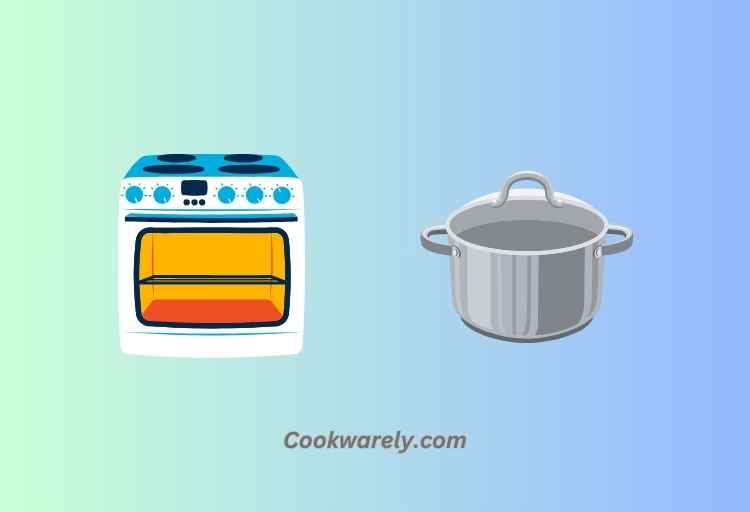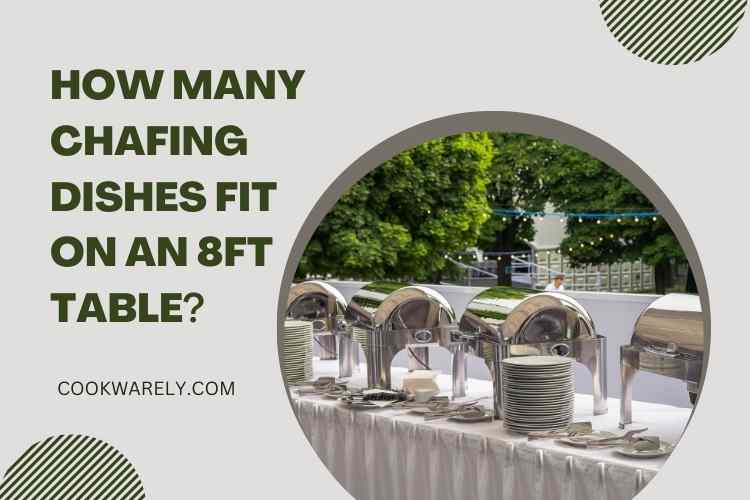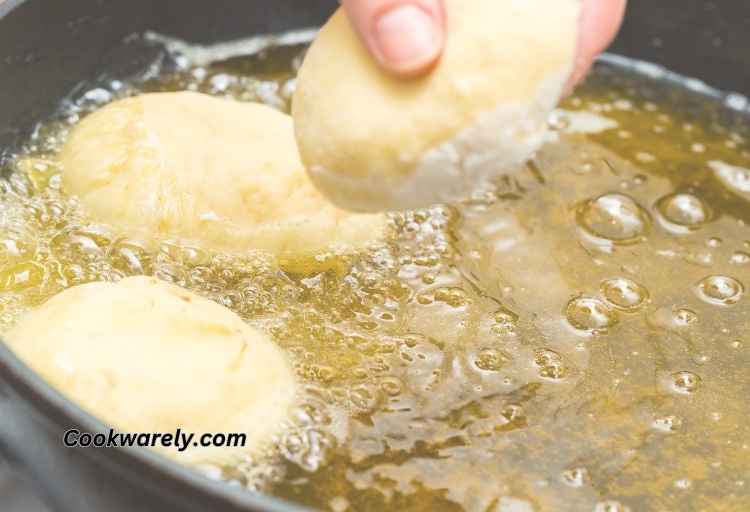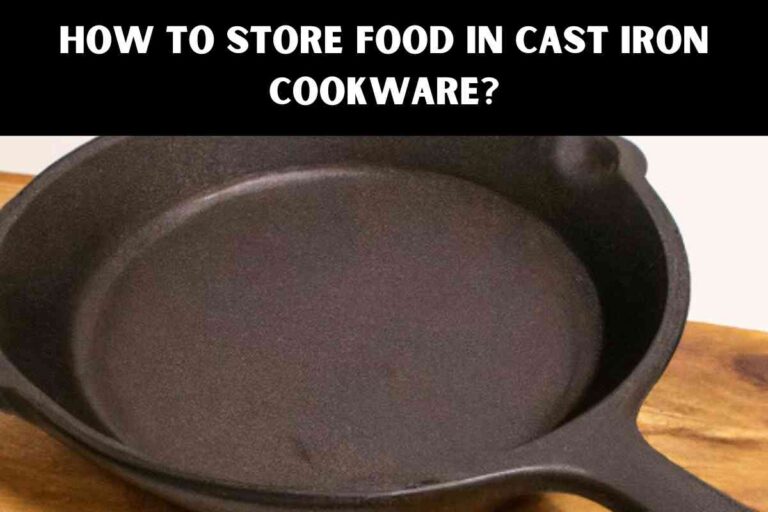How To Use A Pre-Seasoned Cast Iron Skillet For The First Time?
Cooking with a pre-seasoned cast iron skillet can be a game-changer in the kitchen. Not only does it offer excellent heat retention and even cooking, but it also adds a unique flavor to your dishes over time.
To use a pre-seasoned cast iron skillet for the first time, wash it with hot water (no soap), dry thoroughly, apply a thin layer of cooking oil, and cook on low to medium heat. Proper care ensures a well-seasoned, non-stick surface for cooking.
When you first get your hands on a pre-seasoned cast iron skillet, the excitement of cooking with it might make you want to dive right in.
However, there are a few essential steps to follow before you start flipping pancakes or searing steaks.
- Avoid soap, use hot water, and ensure it’s dry to prevent rust.
- Apply oil before use, and cook with fats for better seasoning.
- Use low to medium heat, lift on glass tops, protect against hot handles, and use suitable utensils to maintain seasoning.
10 Considerations When Using A Pre-Seasoned Cast Iron Skillet for the First Time
| Consideration | Description |
|---|---|
| 1. No Soap | Avoid using soap when washing the skillet to preserve seasoning. |
| 2. Thorough Drying | Ensure the skillet is completely dry after washing to prevent rust. |
| 3. Light Oil Coating | Apply a thin coating of cooking oil before each use to maintain seasoning. |
| 4. Cooking with Fat or Oil | Cooking with fats or oils over time helps build and enhance the skillet’s seasoning. |
| 5. Re-Seasoning | Be prepared to re-season if the skillet loses its non-stick properties or looks dull. |
| 6. Use Low to Medium Heat | Cast iron retains heat well, so low to medium heat is sufficient and prevents sticking. |
| 7. Be Gentle on Glass Cooktops | Lift, don’t slide, the skillet on ceramic glass cooktops to avoid scratching. |
| 8. Oven Safety | Ensure the skillet is oven-safe, protect against hot handles, and avoid sudden temperature changes. |
| 9. Proper Utensils | Use silicone, nylon, bamboo, or wood utensils to preserve seasoning; metal utensils can be used once well seasoned. |
| 10. Dry Thoroughly | Never let the skillet air dry to prevent rust; towel drying is essential. |
Key Takeaways
- Apply a light coating of cooking oil before each use to enhance the skillet’s non-stick properties and prevent rust.
- Use low to medium heat to prevent sticking and choose appropriate utensils to protect the skillet’s seasoning. Additionally, be cautious with hot handles and sudden temperature changes when using the skillet in the oven.
- The more you use your pre-seasoned skillet, the more its natural non-stick surface improves. It’s like a culinary companion that gets better with every meal.

How to Use a Pre-Seasoned Cast Iron Skillet for the First Time?
Here’s an explanation of each step in the table on how to use a pre-seasoned cast iron skillet for the first time:
1. Wash with Hot Water (No Soap)
Before using your pre-seasoned cast iron skillet, it’s essential to give it a gentle wash with hot water. The key here is to avoid using soap. Soap can strip away the skillet’s seasoning, which is the flavorful and natural non-stick coating that builds up over time.
2. Thoroughly Dry
After washing, it’s crucial to dry your skillet thoroughly. This step helps prevent rust. You can use a clean towel or paper towel to ensure it’s completely dry.
3. Pre-Seasoning Advantage
Pre-seasoned cast iron cookware comes ready to use. The factory has already applied a layer of seasoning to the skillet. This means you can start cooking delicious meals right away without the need for an initial seasoning process.
4. Apply a Thin Coating of Cooking Oil
To keep your pre-seasoned cast iron skillet in top-notch condition, it’s essential to apply a light coating of cooking oil before each use. This helps maintain the skillet’s seasoning and prevents rust. Use a paper towel to spread the oil evenly across the cooking surface.
5. Cooking with Fat or Oil
As you use your cast iron skillet regularly, it will continue to season itself. The fats and oils from your cooking gradually build up the skillet’s natural non-stick surface. Over time, this seasoning layer will become even more robust, making your skillet more versatile.
6. Re-Seasoning as Needed
While pre-seasoned cast iron skillets are convenient, there may come a time when you need to re-season your skillet. This usually happens if the skillet loses its non-stick properties or if it looks dull and gray.
7. Re-Seasoning Process
To re-season your skillet, you can follow these steps:
Apply a high smoke point cooking oil, such as vegetable oil, to the cooking surface.
8. Preheat your oven to 176°C (350°F).
Place the skillet in the oven upside down to allow excess oil to drip off. Put a baking sheet or aluminum foil on the lower rack to catch any oil drips.
9. Let it bake for about an hour.
Remove the skillet from the oven and wipe off any remaining excess oil. Your skillet should now be well-seasoned and ready for more cooking adventures.
10. Use Low to Medium Heat
Cast iron retains heat exceptionally well, so there’s no need to crank up the heat to the highest setting. Low to medium heat is usually sufficient for most cooking tasks. It also helps prevent your food from sticking.
What Are The Pre-Seasoning Advantages?
One of the remarkable things about pre-seasoned cast iron cookware is that it comes ready to use. The factory has already applied a layer of seasoning to the skillet. This means you can start cooking delicious meals right away without the need for an initial seasoning process.
The pre-seasoning advantages of a cast iron skillet are significant for both new and experienced cooks. When you acquire a pre-seasoned cast iron skillet, you’re essentially receiving a kitchen tool that’s ready to go from day one.
The manufacturer has already applied a layer of natural seasoning, which is essentially a buildup of oils and fats that provide a non-stick surface and add a unique flavor to your dishes.
This means you can start cooking delicious meals right away without the need for an initial seasoning process, which can be a time-consuming task with unseasoned cast iron.
Pre-seasoned skillets are a convenient option, particularly for those new to cast iron cooking, as they offer the benefits of cast iron without the initial seasoning effort.
Over time, as you continue to use your pre-seasoned skillet, it will only get better, as the seasoning layer continues to develop and enhance the skillet’s cooking performance.
How To Prepare Pre-Seasoned Cast Iron Skillet for Cooking?
To keep your pre-seasoned cast iron skillet in top-notch condition, it’s essential to apply a light coating of cooking oil before each use. This helps maintain the skillet’s seasoning and prevents rust.
Apply a Thin Coating of Cooking Oil
Before you start cooking, add a small amount of cooking oil to the skillet. You can use vegetable oil, canola oil, or any oil with a high smoke point.
Use a paper towel to spread the oil evenly across the cooking surface. You don’t need a lot; a little goes a long way.
Cooking with Fat or Oil
As you use your cast iron skillet regularly, it will continue to season itself. The fats and oils from your cooking gradually build up the skillet’s natural non-stick surface.
Over time, this seasoning layer will become even more robust, making your skillet more versatile.
How To Do Re-Seasoning?
While pre-seasoned cast iron skillets are convenient, there may come a time when you need to re-season your skillet. This usually happens if the skillet loses its non-stick properties or if it looks dull and gray.
Re-Seasoning Process
To re-season your skillet, follow these steps:
- Apply a high smoke point cooking oil, such as vegetable oil, to the cooking surface.
- Preheat your oven to 176°C (350°F).
- Place the skillet in the oven upside down to allow excess oil to drip off. Put a baking sheet or aluminum foil on the lower rack to catch any oil drips.
- Let it bake for about an hour.
- Remove the skillet from the oven and wipe off any remaining excess oil.
- Your skillet should now be well-seasoned and ready for more cooking adventures.
Cooking Tips When Using Pre-Seasoned Cast Iron Skillet
Using your pre-seasoned cast iron skillet is a breeze, but here are some helpful tips to ensure your cooking experience is smooth:
Use Low to Medium Heat
Cast iron retains heat exceptionally well, so there’s no need to crank up the heat to the highest setting. Low to medium heat is usually sufficient for most cooking tasks. It also helps prevent your food from sticking.
Be Gentle on Ceramic Glass Cooktops
If you’re using a ceramic glass cooktop, it’s essential to lift your cast iron skillet instead of sliding it. This prevents scratches on the cooktop’s surface. Always refer to your cooktop’s Use and Care instructions for specific guidelines.
Oven Safety For Pre-Seasoned Cast Iron Skillet
Your pre-seasoned cast iron skillet can also be your trusty oven companion, but there are a few safety considerations to keep in mind:
Oven-Safe Up to 260°C (500°F)
You can safely use your skillet in the oven at temperatures up to 260°C (500°F). This versatility makes it great for dishes that require both stovetop and oven cooking.
Beware of Hot Handles
When using your skillet in the oven, remember that both the handle and the lid knob get hot. Always use protective mitts or oven gloves to handle it safely.
Avoid Sudden Temperature Changes
After using your skillet in the oven, allow it to cool down before washing it. Sudden temperature changes, like transferring a hot skillet to a cold sink, can cause thermal shock and damage the cookware.
Conclusion
Cooking with a pre-seasoned cast iron skillet can bring a world of flavors and versatility to your kitchen. By following these steps and tips, you’ll be well on your way to becoming a cast iron cooking pro. Enjoy your culinary adventures with your trusty skillet, and savor the delicious meals you create!
Remember, with a bit of care and attention, your pre-seasoned cast iron skillet can become a cherished kitchen companion that lasts for generations.






